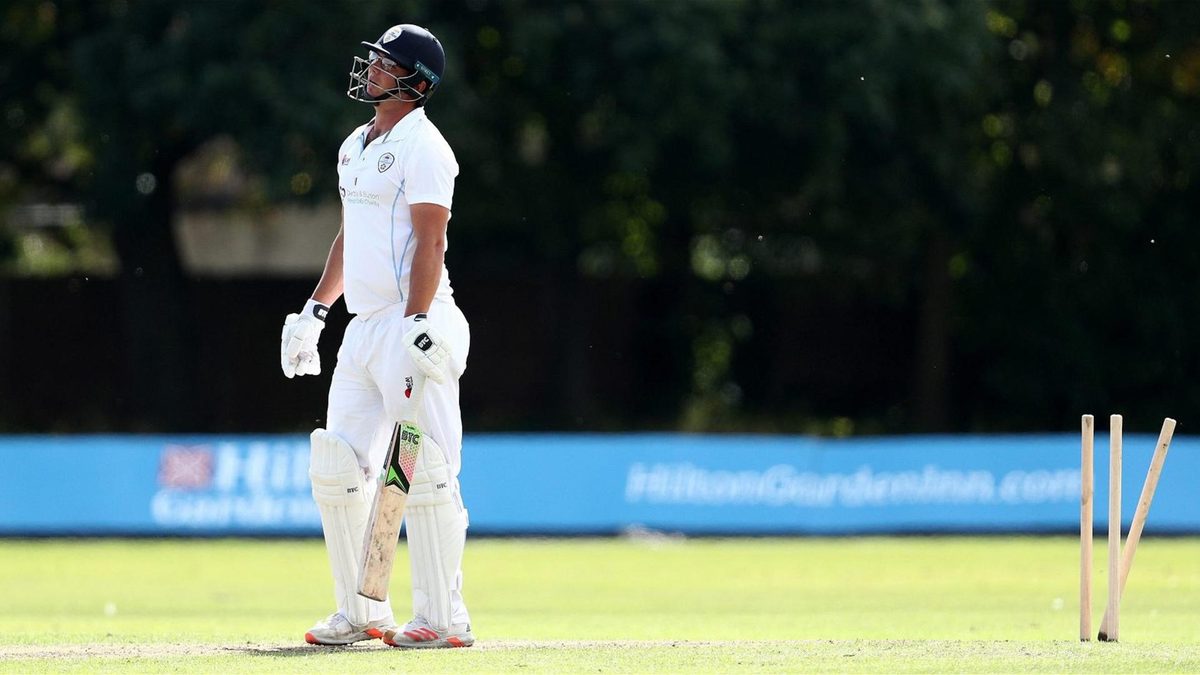
Eight teams were in mathematical contention for the Bob Willis Trophy final at the start of the final round of fixtures, but that number has slowly been whittled down.
With 24 points up for grabs for each team, and the top two group winners making it to the final, the eight sides vying for a place in the showpiece were Somerset (76 points), Derbyshire (71), Worcestershire (70), Essex (70), Yorkshire (66), Kent (63), Middlesex (59) and Hampshire (54).
Essex won in quick time, taking four bonus points, bringing them up to 90, putting them out of reach of Hampshire, Middlesex and Kent in the South Group. Let’s assume for the moment that the fixture between Somerset and Worcestershire doesn’t end in a draw, which seems likely given 26 wickets had fallen by lunch on day three.
In that case, the winner of that game will win the Central Group with at least 90 points, given Worcestershire claimed four bonus points and Somerset five, meaning the winner of the North Group would need at least 90 points to take it to a tie-breaker.
As it stands, both sides in the North Group could yet bring it level. Derbyshire claimed just three bowling bonus points, while Yorkshire are 164-5, and need another 236 runs to take a full compliment of bonus points. If both teams then won, they would each finish on 90 points, at which point it would come down to a tie-breaker, between just Essex and the North Group winners, if Somerset win, or between Worcestershire, Essex and the North Group winners, if the Pears take home the points.
In any case, Essex will qualify for the final*, with the first tie-breaker being games won, of which they have four, more than all bar potentially Somerset. So you can breathe easy Eagles fans, you’re through.
The winner of the Central Group will also be home dry (again, assuming there is a result in that Somerset-Worcestershire fixture). If it’s Somerset, they will have more points than any other team. If it’s Worcestershire, and Derbyshire and Yorkshire win, the Pears will have the same points, wins, and losses as those two teams, but will qualify by virtue of having taken more wickets than both teams.
However, if there’s a draw between Somerset and Worcestershire, the Cidermen would top the Central Group with 89 points, and it gets complicated. Should Derbyshire win, and Yorkshire fail to win with maximum bonus points, Derbyshire will be through. If Derbyshire fail to win, and Yorkshire win with seven bonus points, it would come down to wickets taken between Somerset and Yorkshire, with Somerset progressing. If Derbyshire win and Yorkshire win with maximum bonus points, it will come down to which side has taken more wickets, and with Derbyshire having taken 55 and Yorkshire 52 at the start of this round, that could yet go either way.
It could all have been much different, and simpler. Had Derbyshire scored five runs more in their first innings, a win would have seen them finish ahead of Essex. Had the Pears scored just one run fewer, they wouldn’t have been able to catch Essex even with a win. The barest of margins strikes once again.
*Since this piece was written, the status of the game between Northamptonshire and Gloucestershire, abandoned due to a player testing positive for Covid-19, has come into question. If that game is deemed ‘incomplete’ by a Cricket Technical Committee, net run rate will be the tie-breaker. Here’s how the teams stand on that front.








